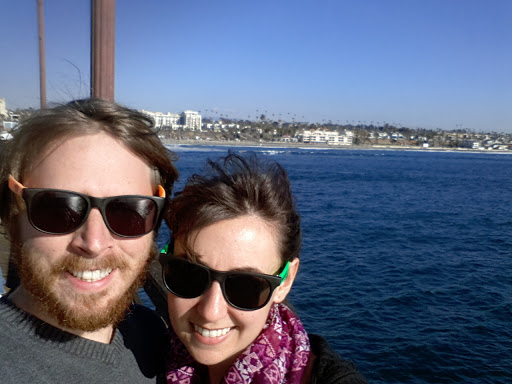Jeremy Duane Cooper
age ~54
from Hubbardston, MI
- Also known as:
-
- Jeremy D Cooper
- Jeremy Patrick Cooper
Jeremy Cooper Phones & Addresses
- Hubbardston, MI
- Midland, MI
- 15717 Ashworth Ave N, Seattle, WA 98133
- Shoreline, WA
- Ypsilanti, MI
- East Lansing, MI
- Kiona, WA
Work
-
Company:Blake Dawson
-
Address:
Specialities
Mergers and Acquisitions • Takeovers • Corporation Law
Lawyers & Attorneys

Jeremy Cooper - Lawyer
view sourceOffice:
Blake Dawson
Specialties:
Mergers and Acquisitions
Takeovers
Corporation Law
Takeovers
Corporation Law
ISLN:
900708068
Admitted:
1986
University:
LL.B.
Resumes

Jeremy Cooper
view sourcePosition:
Analyst at US Federal Government
Location:
United States
Work:
US Federal Government since May 2011
Analyst
Brigham Young University 2005 - 2010
Student
Analyst
Brigham Young University 2005 - 2010
Student
Education:
Brigham Young University 2005 - 2011
Bachelor of Science (B.S.), Russian Language and Literature
Bachelor of Science (B.S.), Russian Language and Literature

Senior Mechanical Engineer - Rotating Equipment At Bechtel
view sourcePosition:
Senior Mechanical Engineer - Rotating Equipment at Bechtel
Location:
United States
Industry:
Oil & Energy
Work:
Bechtel since May 2010
Senior Mechanical Engineer - Rotating Equipment
Fluor Jan 2008 - May 2010
Design Engineer-Rotating Equipment
Flowserve Nov 2005 - Jan 2008
Project Manager
Integrated Flow Solutions (IFS) Aug 2001 - Nov 2005
Lead Project Engineer
Senior Mechanical Engineer - Rotating Equipment
Fluor Jan 2008 - May 2010
Design Engineer-Rotating Equipment
Flowserve Nov 2005 - Jan 2008
Project Manager
Integrated Flow Solutions (IFS) Aug 2001 - Nov 2005
Lead Project Engineer
Education:
LeTourneau University 1998 - 2003
BSME, Mechanical Engineering
BSME, Mechanical Engineering

Principal Consultant At Intredium
view sourcePosition:
Principal Consultant at Intredium
Location:
West Des Moines, Iowa
Industry:
Information Technology and Services
Work:
Intredium since Mar 2012
Principal Consultant
Caleris - West Des Moines, IA Aug 2005 - Mar 2012
VP, Information Technology
Principal Consultant
Caleris - West Des Moines, IA Aug 2005 - Mar 2012
VP, Information Technology
Education:
Bethel University 2009 - 2011
MBA Crossroads College 1998 - 2002
BA
MBA Crossroads College 1998 - 2002
BA
Skills:
Organizational Leadership
Operations Management
Team Management
IT Infrastructure Management
Information Security
CISSP
Windows Server
System Center Suite
Windows Azure
Cisco Technologies
CCNA
VMware
NetApp
Operations Management
Team Management
IT Infrastructure Management
Information Security
CISSP
Windows Server
System Center Suite
Windows Azure
Cisco Technologies
CCNA
VMware
NetApp
Interests:
Flying
Certifications:
Certified Information Systems Security Professional (CISSP), (ISC)2
Cisco Certified Network Associate (CCNA), Cisco
Microsoft Certified Technology Specialist (MCTS), Microsoft
Cisco Certified Network Associate (CCNA), Cisco
Microsoft Certified Technology Specialist (MCTS), Microsoft

Acquisitions Manager At Alcove Investments Llc
view sourcePosition:
Acquisitions Manager at Alcove Investments LLC
Location:
United States
Work:
Alcove Investments LLC since Dec 2009
Acquisitions Manager
Acquisitions Manager

Jeremy Cooper Madison County, FL
view sourceWork:
creative construsion
Madison County, FL
land clearing
Madison County, FL
land clearing
Education:
madison co highschoole
Madison County, FL
1996
none in none
Madison County, FL
1996
none in none

Jeremy Cooper Seattle, WA
view sourceWork:
Prof. Theo Eicher - University of Washington
Sep 2012 to 2000
Research Assistant Duke's Chowderhouse
2006 to 2000
Supervisor
Sep 2012 to 2000
Research Assistant Duke's Chowderhouse
2006 to 2000
Supervisor
Education:
Universiteit van Amsterdam
Amsterdam
2011 to 2012
Master of Science in Economics University of Washington
Seattle, WA
2009 to 2011
Bachelor of Science in Economics Free University of Bozen-Bolzano
Bolzano - Bozen, Trentino-Alto Adige
2009 to 2010
Bachelor of Science in Economics - International Exchange Seattle Central Community College
Seattle, WA
2007 to 2009
General studies - Business School Transfer
Amsterdam
2011 to 2012
Master of Science in Economics University of Washington
Seattle, WA
2009 to 2011
Bachelor of Science in Economics Free University of Bozen-Bolzano
Bolzano - Bozen, Trentino-Alto Adige
2009 to 2010
Bachelor of Science in Economics - International Exchange Seattle Central Community College
Seattle, WA
2007 to 2009
General studies - Business School Transfer
Skills:
Experienced in econometric modeling software package STATA, Proficient in reading/writing/speaking in Italian and Spanish
Isbn (Books And Publications)
-
Under The Hammer: The Auctions And Auctioneers Of London
view source -
Author:Jeremy Cooper
-
ISBN #:0094613702
-
Dealing With Dealers: The Ins And Outs Of The London Antiques Trade
view source -
Author:Jeremy Cooper
-
ISBN #:0500013543
-
Victorian And Edwardian Furniture And Interiors: From The Gothic Revival To Art Nouveau
view source -
Author:Jeremy Cooper
-
ISBN #:0500234906
-
The Complete Guide To London'S Antique Street Markets
view source -
Author:Jeremy Cooper
-
ISBN #:0500270465
-
Victorian And Edwardian Furniture And Interiors: From The Gothic Revival To Art Nouveau
view source -
Author:Jeremy Cooper
-
ISBN #:0500280223
-
The Legal Rights Manual: A Guide For Social Workers And Advice Centres
view source -
Author:Jeremy Cooper
-
ISBN #:0566055074
-
Public Legal Services: A Comparative Study Of Policy, Politics, And Practice
view source -
Author:Jeremy Cooper
-
ISBN #:0421303506
-
Public Interest Law
view source -
Author:Jeremy Cooper
-
ISBN #:0631142991
Us Patents
-
System And Method For Continuous, Asynchronous Autofocus Of Optical Instruments
view source -
US Patent:8362409, Jan 29, 2013
-
Filed:Apr 22, 2010
-
Appl. No.:12/765756
-
Inventors:Jeremy R. Cooper - Issaquah WA, US
Paul Goodwin - Shore Line WA, US -
Assignee:Applied Precision, Inc. - Issaquah WA
-
International Classification:G02B 7/04
G03B 13/00
G03B 21/53 -
US Classification:2502014, 396137
-
Abstract:Embodiments of the present invention are directed to autofocus subsystems within optical instruments that continuously monitor the focus of the optical instruments and adjust distances within the optical instrument along the optical axis in order to maintain a precise and stable optical-instrument focus at a particular point or surface on, within, or near a sample. Certain embodiments of the present invention operate asynchronously with respect to operation of other components and subsystems of the optical instrument in which they are embedded.
-
System And Method For Continuous, Asynchronous Autofocus Of Optical Instruments Using Multiple Calibration Curves
view source -
US Patent:8558154, Oct 15, 2013
-
Filed:Aug 30, 2011
-
Appl. No.:13/221710
-
Inventors:Jeremy Cooper - Issaquah WA, US
Paul Goodwin - Shoreline WA, US
Stephen G. Goodson - Seattle WA, US -
Assignee:Applied Precision, Inc. - Issaquah WA
-
International Classification:G02B 27/64
-
US Classification:2502014
-
Abstract:The current application is directed to autofocus subsystems within optical instruments that continuously monitor the focus of the optical instruments and adjust distances within the optical instrument along the optical axis in order to maintain a precise and stable optical-instrument focus at a particular point or surface on, within, or near a sample. Certain autofocus implementations operate asynchronously with respect to operation of other components and subsystems of the optical instrument in which they are embedded. The described autofocus subsystems employ multiple calibration curves to precisely adjust the z-position of an optical instrument.
-
Optical-Fiber-Based Light Source
view source -
US Patent:20100238681, Sep 23, 2010
-
Filed:Mar 12, 2010
-
Appl. No.:12/723604
-
Inventors:Ronald Seubert - Sammamish DC, US
Jeremy Cooper - Issaquah WA, US -
International Classification:G02B 6/04
-
US Classification:362554, 362555
-
Abstract:Various embodiments of the present invention are directed to optical-fiber-based light sources for use in microscopy, spectrometry, and other scientific and technical instruments, devices, and processes. Light-emitting diodes (“LEDs”) and other light sources are, in various embodiments of the present invention, incorporated on or within an optical fiber or fiber-optic cable in order to produce a bright optical-fiber-based light source. By incorporating light-emitting devices on or within an optical fiber, a significantly greater photon flux can be obtained, within the optical fiber or fiber-optic cable, than can be obtained by directing light from equivalent, external light-emitting elements into the optical fiber or fiber-optic cable, and the optical-fiber-based light sources of the present invention provide desirable characteristics of the light sources embedded on or within them.
-
Systems For Chromatic Aberration Correction In Total Internal Reflection Fluorescence Microscopy
view source -
US Patent:20120176672, Jul 12, 2012
-
Filed:Dec 28, 2011
-
Appl. No.:13/338664
-
Inventors:JEREMY R. COOPER - ISSAQUAH WA, US
-
Assignee:APPLIED PRECISION, INC. - ISSAQUAH WA
-
International Classification:G02B 21/08
-
US Classification:359385
-
Abstract:Correction elements that can be incorporated in objective-based TIRF microscopy instruments to correct for chromatic aberrations are described. A correction element can be placed between a multiple wavelength excitation beam source and the microscope objective lens. In one aspect, the thickness of the correction element is defined to compensate for different axial positions of the focal points associated with each excitation wavelengths traveling along the outer edge of lenses comprising a microscope objective lens. In another aspect, the correction element can be angled and/or configured so that the different wavelengths of multiple wavelength excitation light are shifted to adjust the angle of incidence for each wavelength at the specimen/substrate interface.
-
Systems For Fluorescence Illumination Using Superimposed Polarization States
view source -
US Patent:20120176673, Jul 12, 2012
-
Filed:Jan 12, 2012
-
Appl. No.:13/348750
-
Inventors:JEREMY R. COOPER - ISSAQUAH WA, US
-
Assignee:APPLIED PRECISION, INC. - ISSAQUAH WA
-
International Classification:G02B 21/06
G02B 27/28 -
US Classification:359386, 35949201, 35949002, 35948908, 359385
-
Abstract:Various superimposing beam controls that can superimpose beams of light with different optical properties are described. In one aspect, a beam control receives a beam of light and outputs one or more beams. Each beam is output in a different polarization state and with different optical properties. Superimposing beam controls can be incorporated in fluorescence microscopy instruments to split a beam of excitation light into one or more beams of excitation light. Each beam of excitation light has a different polarization and is output with different optical properties so that each excitation beam can be used to execute a different microscopy technique.
-
Light-Scanning Systems
view source -
US Patent:20130286456, Oct 31, 2013
-
Filed:Dec 29, 2011
-
Appl. No.:13/979098
-
Inventors:Jeremy R. Cooper - Issaquah WA, US
-
Assignee:Applied Precision Inc. - Issaquah WA
-
International Classification:G02B 21/00
G02B 26/10 -
US Classification:3592051
-
Abstract:Various light-scanning systems that can be used to perform rapid point-by-point illumination of a focal plane within a specimen are disclosed. The light-scanning systems can be incorporated in confocal microscopy instruments to create an excitation beam pivot axis that lies within an aperture at the back plate of an objective lens. The light-scanning systems receive a beam of excitation light from a light source and direct the excitation beam to pass through the pivot point in the aperture of the back plate of the objective lens while continuously scanning the focused excitation beam across a focal plane.
-
Laser Beam Selectors
view source -
US Patent:20130335797, Dec 19, 2013
-
Filed:Jan 16, 2012
-
Appl. No.:14/002534
-
Inventors:Jeremy R. Cooper - Issaquah WA, US
-
International Classification:G02B 21/00
G02B 21/06
G02B 26/10 -
US Classification:3591992, 3592041, 3591993, 359388
-
Abstract:Various beam selectors for selectively placing one of at least two beams of light along the same output path are disclosed. In one aspect, a beam selector receives at least two substantially parallel beams of light. The beam selector includes a plate with an aperture so that when one of the at least two beams is selected for transmission, the beam selector directs only the selected beam along an output path through the aperture. The plate can also serve to block transmission of unselected beams. The output path through the aperture is the same for each of the at least two beams when each beam is selected. Beam selectors can be incorporated into fluorescence microscopy instruments to selectively place particular excitation beams along the same path through the microscope objective lens and into a specimen to excite fluorescence of fluorescent probes attached to a particular component of the specimen.
-
Laser Beam Irradiance Control Systems
view source -
US Patent:20130335798, Dec 19, 2013
-
Filed:Jan 16, 2012
-
Appl. No.:14/002615
-
Inventors:Jeremy R. Cooper - Issaquah WA, US
-
Assignee:Applied Precision, Inc. - Issaquah WA
-
International Classification:G02B 26/08
G02B 26/10 -
US Classification:3592051, 3592262, 3592212
-
Abstract:Irradiance control systems (“ICSs”) that control the irradiance of a beam of light are disclosed. ICSs include in a beam translator and a beam launch. The beam translator translates the beam substantially perpendicular to the propagating direction of the beam with a desired displacement so that the beam launch can remove a portion of the translated beam and the beam can be output with a desired irradiance. The beam launch attenuates the irradiance of the beam based on the amount by which the beam is translated. ISCs can be incorporated into fluorescent microscopy instruments to provide high-speed, fine-tune control over the irradiance of excitation beams.
Googleplus

Jeremy Cooper
Work:
Waukee Community School District - Technology Education Teacher (2012)
Van Meter Community School District - Industrial Technology / Virtual Reality Teacher (2010-2013)
ITT Technical Institute - Adjunct Instructor - Drafting and Design / General Studies (2010-2013)
Van Meter Community School District - Industrial Technology / Virtual Reality Teacher (2010-2013)
ITT Technical Institute - Adjunct Instructor - Drafting and Design / General Studies (2010-2013)
Education:
University of Northern Iowa - Technology Education
About:
Hello, my name is Jeremy Cooper and I am currently a Technology Education teacher at Prairieview, in the Waukee Community School District. I currently teach Drafting and Design and Introduction to Wo...
Tagline:
Waukee Technology Education Teacher, 9th Grade Teacher, Technology Student Association Advisor
Bragging Rights:
Waukee Technology Education Teacher, 9th Grade Teacher, Technology Student Association Advisor

Jeremy Cooper
Work:
SIMCO Electronics - Calibration Technician/QA (7)
United States Navy - Aviation Electronics Technician (2005-2009)
United States Navy - Aviation Electronics Technician (2005-2009)
Education:
Southern Illinois University Carbondale - Electronics Systems Technologies

Jeremy Cooper
Work:
Google
Education:
Virginia Polytechnic Institute and State University

Jeremy Cooper
Work:
Cooper & Associates, AC - Accountant (2004)
Education:
West Virginia University - Accounting

Jeremy Cooper
Work:
U.S. Army - Sergeant (2006-2010)
Education:
Georgia Perimeter College - Psychology

Jeremy Cooper
Education:
Niagara University
About:
Welcome to the Google+ page for JC Photography.
Tagline:
JC Photography

Jeremy “Jeryco” Cooper
Education:
Everyday all day
About:
Hi Nice to meet you, hope I can get your gears turning.
Tagline:
Watch the videos and you will get an idea
Bragging Rights:
Black Belt, Frontman, Farmer

Jeremy Cooper
Education:
Teachers College, Columbia University - Psychological Counseling, Binghamton University
Youtube
News

Prison sentenced vacated for paramedic convicted in death of Elijah McClain in Colorado
view source- Paramedic Jeremy Cooper was also found guilty of criminally negligent homicide and sentenced to four years probation. One of the police officers, Randy Roedema, was also convicted in the case of criminally negligent homicide and sentenced in January to 14 months in jail. Two other officers were acqu
- Date: Sep 13, 2024
- Category: U.S.
- Source: Google

Elijah McClain died of ketamine administration, according to updated autopsy report
view source- Former Aurora Police officers Nathan Woodyard, Randy Roedema and Jason Rosenblatt, as well as former paramedics Jeremy Cooper and Peter Cichuniec, have been charged with 32 counts of manslaughter and criminally negligent homicide. Additionally, Roedema and Rosenblatt were each indicted on one count
- Date: Sep 23, 2022
- Category: U.S.
- Source: Google

Elijah McClain's autopsy report changed to death by ketamine
view source- McClain was administered 500 mgs of ketamine, which was administered after paramedic Jeremy Cooper determined McClains weight to be roughly 200 pounds. McClain actually weighed 143 pounds and his proper dosage should have been closer to 325 mgs of ketamine, according to the indictment.
- Date: Sep 23, 2022
- Category: U.S.
- Source: Google
Plaxo

Jeremy Cooper
view source
Jeremy Cooper
view sourceReal Estate Appraiser at Jeremy L. Cooper Appraisa...

Jeremy Turtle Cooper
view source
Jeremy Norman Cooper
view source
Jeremy Walter Cooper
view source
Jeremy Jcity Cooper
view source
Jeremy Keith Cooper
view source
Jeremy D Cooper
view source
Jeremy Cooper
view source
Andrew Jeremy Cooper
view sourceMyspace

Jeremy Cooper
view sourceLocality:
Philadelphia (Mt. Airy)/Baltimore, Pennsylvania
Gender:
Male
Birthday:
1947
Classmates

Jeremy Cooper
view sourceSchools:
A.K. Suter Elementary School Pensacola FL 1994-1998
Community:
Daniel Everman, John Pugh, Edgar Rountree

Jeremy Cooper
view sourceSchools:
Pine Forest High School Pensacola FL 1996-2000
Community:
Patrick Schmidt, Sam Nettles

Jeremy Cooper
view sourceSchools:
Horizon High School Brighton CO 1992-1996
Community:
Melody Huffer

Jeremy Cooper
view sourceSchools:
Jeff Davis High School Hazlehurst GA 1993-1997
Community:
Roy Adams, Lisa Blakeslee, Myrle Creamer

Jeremy Cooper
view sourceSchools:
East Marion High School Columbia MS 1994-1998
Community:
Donnie Gay

Jeremy Cooper
view sourceSchools:
Hightower Trail Elementary School Conyers GA 1988-1993, Conyers Middle School Conyers GA 1993-1994, Clements Middle School Covington GA 1995-1996
Community:
Myke Johns, Latoya Davidson, Allison Hanson, Amanda Nielsen

Jeremy Cooper
view sourceSchools:
Randolph-Clay High School Cuthbert GA 1998-2002
Community:
Freddie Cannon, Billy Williams
Flickr
Get Report for Jeremy Duane Cooper from Hubbardston, MI, age ~54













